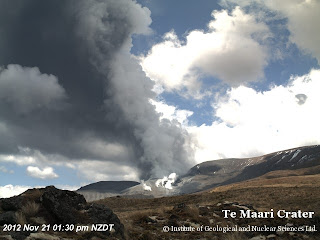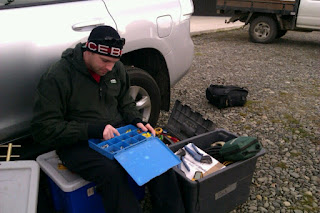Our new website went live this week and we hope you are all enjoying it! I thought I'd do a wee series of posts to help you find your way around!
The first important part are the three main places to get your information:
-
Quakes: Every earthquake located in New Zealand! Along with seismic drums and statistics.
-
Volcano: Home to cameras, drums and the current status of the volcanoes.
-
Info : Which has all of our latest news,
hazard info, maps of our networks, and our raw data.
You can access these different areas by the black bar which is at the top of each page (see pic above)
 Quakes
Quakes
- When you go to www.geonet.org.nz this is where you will find yourself here (only the last three felt earthquakes are shown so the page loads quickly!)
- Using the navigation bar (circled in the pic on the right) you can select a region and see all of the recent events there and you can choose to see ALL or FELT earthquakes. This is also where you will find the seismic drums.
Volcano
-Here you can select a volcano and see its current alert level, drums and photos from our volcano cameras
Info
-
News: All of our latest news articles, volcano alert bulletins, and updates
-
Data: Where you can access all of our raw data, and find quakes via
QuakeSearch
-
Networks: View maps of all of our networks across NZ, individual site information and information on the equipment we use
-
Geohazards: This is where you will find info on earthquake, volcano, tusnami and landslides
Some tips
See a question mark ? - hover your mouse over it and get more info
See a link with a information i sign next to it - this link will take you to the Info part of our website
Looking around info - check out the page 'tree' on the left hand side for more pages to look at
Click on Maps for a cool interactive time-map
And finally, we are still tweaking a few things, and more features will be added in the near future!




















































